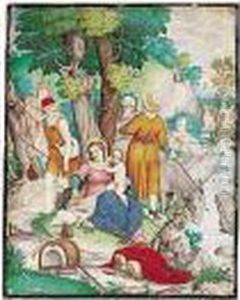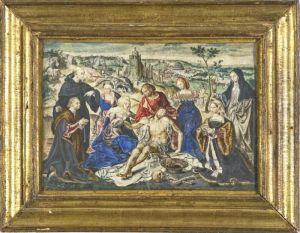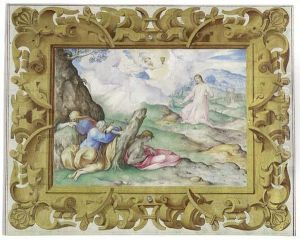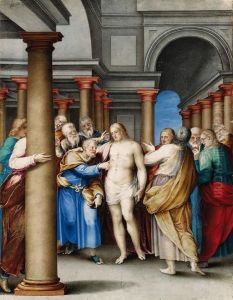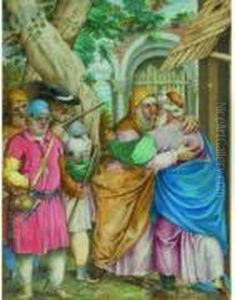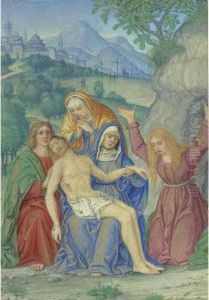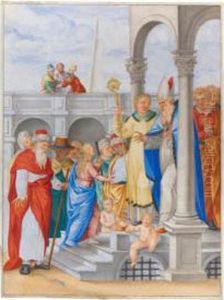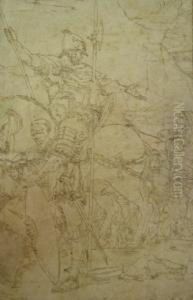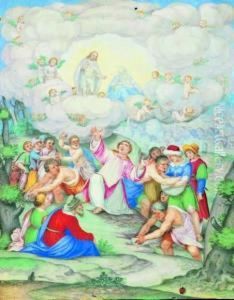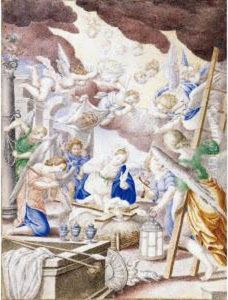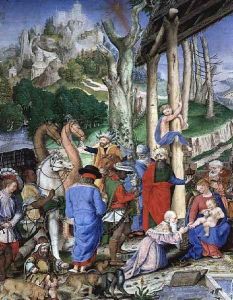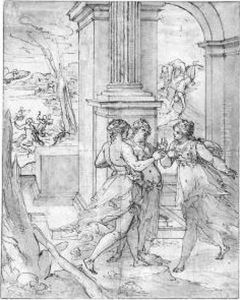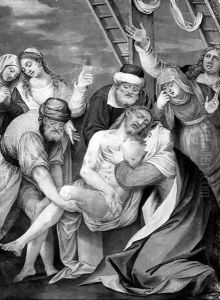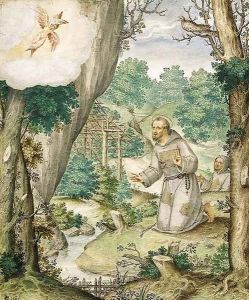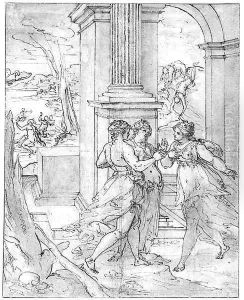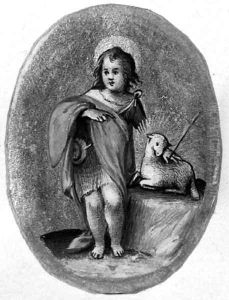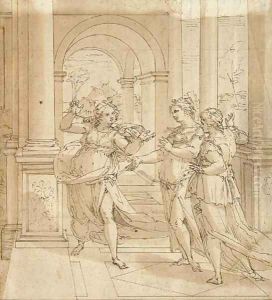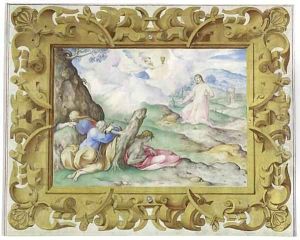Giovanni B. (Il Genvovese) Castello Paintings
Giovanni Battista Castello, known as Il Genovese, was an Italian painter and architect who was born in 1549 in Gandino, near Bergamo, Lombardy. He is not to be confused with Giovanni Battista Castello (called Il Bergamasco), who was a contemporary artist from the same region. Il Genovese began his artistic career in Genoa, from which his nickname derives. He was initially trained by his father, who was also a painter, and later became a pupil of Luca Cambiaso, one of the leading Ligurian painters of the time. Castello's work was heavily influenced by the Mannerist style, which was characterized by artificiality, grace, and elegance, a style that was popular in Italy during the mid to late 16th century. He quickly gained a reputation for his frescoes and religious works. Castello's talent earned him important commissions in Genoa, where he decorated the palaces of Genoese nobility with mythological and historical scenes. In 1590, Castello moved to Spain, where he continued his career at the court of King Philip II. There, he worked on the decoration of the Escorial, the historical residence of the King of Spain. Castello's work in Spain marked a shift in his style, as he began to incorporate elements of the emerging Baroque style into his paintings. His work in the Escorial was well received, and he was appointed as a painter to the king. Castello remained in Spain until his death, which is recorded as having occurred in either 1637 or 1639. His legacy is marked by the blending of Italian Mannerism with the early Baroque style, and he is remembered as a key figure in the cultural exchange between Italy and Spain during the late Renaissance period. Castello's works continue to be appreciated for their intricate detail, use of color, and the successful fusion of different artistic styles.
